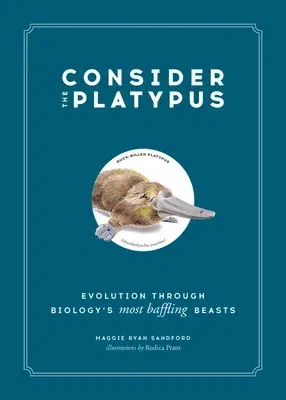*FINALIST FOR THE 2020 GENERAL NONFICTION MINNESOTA BOOK AWARDS*
Interested in the origins of the species? Consider the Platypus
uses pets such as dogs and cats as well as animal outliers like the
axolotl and naked mole rat to wittily tackle mind-bending
concepts about how evolution, biology, and genetics work.
Consider the Platypus explores the history and features of more than
50 animals to provide insight into our current understanding of
evolution. Using Darwin's theory as a springboard, Maggie Ryan Sandford
details scientists' initial understanding of the development of
creatures and how that has expanded in the wake of genetic sequencing,
including the:
-
Peppered Moth, which changed color based on the amount of soot in the
London air;
-
California Two-Spotted Octopus, which has the amazing ability to alter
its DNA/RNA not over generations but during its lifetime;
-
miniscule tardigrade, which is so hearty it can withstand radiation,
lack of water and oxygen, and temperatures as low as -328°F and as
high 304 °F;
-
and, of course, the platypus, which has so many disparate features,
from a duck's bill to venomous spur to mammary patches, that
scientists originally thought it was a hoax.
Surprising, witty, and impeccably researched, Sandford describes each
animal's significant features and how these have adapted to its
environment, such as the zebra finch's beak shape, which was observed by
Charles Darwin and is a cornerstone of his Theory of Evolution. With
scientifically accurate but charming art by Rodica Prato, Consider the
Platypus showcases species as diverse as the sloth, honey bee, cow,
brown kiwi, and lungfish, to name a few, to tackle intimidating concepts
is a accessible way.

